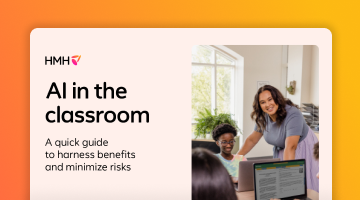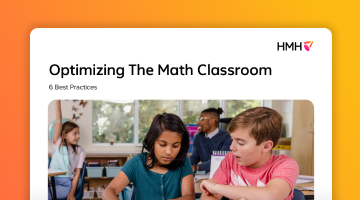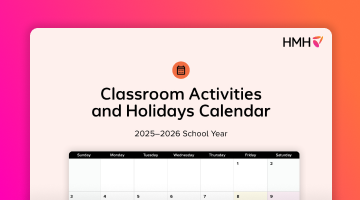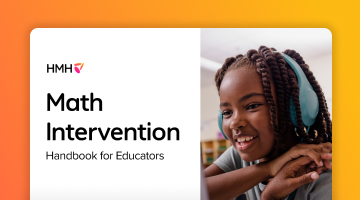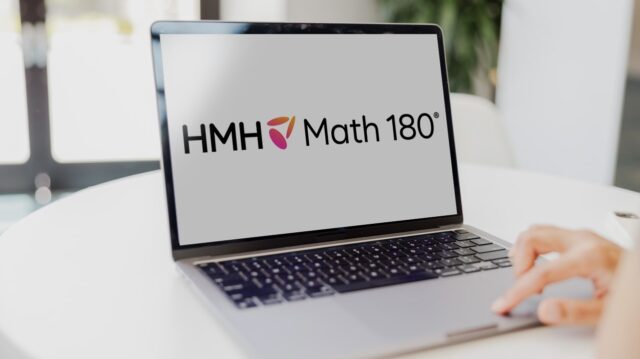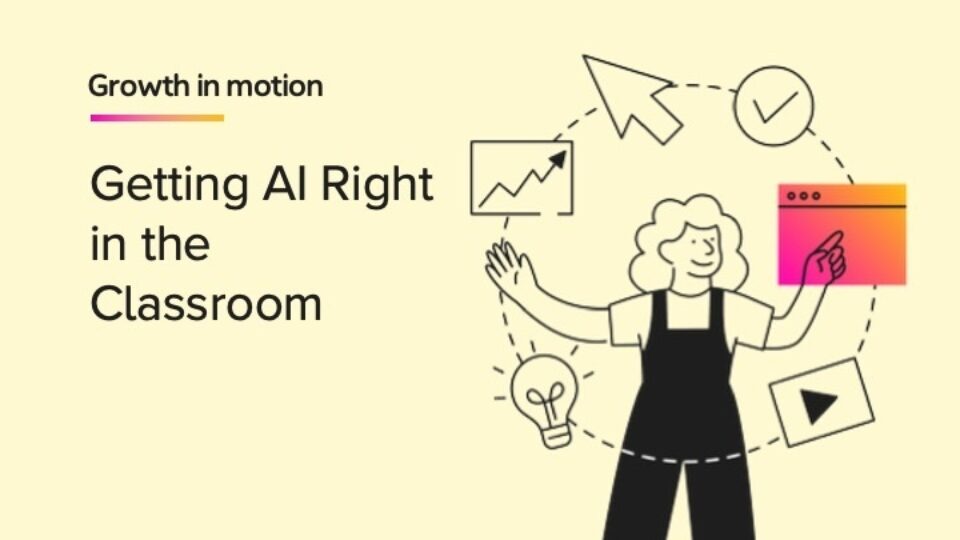
In increasing numbers nationwide, teachers are recognizing the power of artificial intelligence.
Some are taking advantage of AI’s time-saving capabilities, while others are having newfound epiphanies about its potential to differentiate learning experiences, accelerate student growth, and put actionable data insights right at their fingertips.
Years ago, when I was still working in video games, I had my “aha” moment about the power of technology in education when I noticed that my Kindle’s built-in dictionary made it easier for me to expand my vocabulary, all because it removed the friction of switching back and forth between apps to look up new words.
That’s the true utility of AI—its ability to reduce moments that slow down our momentum, pull us out of focus, or waste our time wrestling with clunky interfaces and too many platforms. Removing barriers like these can unlock accelerated growth.
Classroom AI is here and here to stay. But whether it transforms teaching and learning for the better hinges on its ability to eliminate friction, rather than create it, which in turn empowers teachers and boosts student growth.
Educators are using AI to remove friction in the classroom: saving time, personalizing instruction, and gaining insight into student needs
Executive Vice President, HMH Labs
With this year’s Educator Confident Report (ECR) finding that AI usage among educators has skyrocketed, increasing sixfold in just two years, I suspect many teachers are experiencing the joy of using AI to remove friction in the classroom, making it easier for them to focus on what matters most: engaging with students.
The data in the ECR paints a picture of what happens when AI meets education:
- 68% say AI saves them anywhere from 1-5 hours per week, and most are reinvesting that time in student connection and engagement.
- 77% of teachers say they understand how to use generative AI better this year than last.
- Nearly 80% feel confident using it in instructionally effective ways.
- 9 in 10 find AI valuable to their classroom practice, citing benefits like saved time, greater accessibility, and support for learning recovery.
Even more telling: educators who are integrating AI into their classroom routines report being more optimistic about the profession and less likely to consider leaving it. Why? Because AI, when used intentionally, isn’t taking over their work—it’s complementing it.
And yet, despite the encouraging adoption trends, we also heard something important: teachers feel more confident using AI than they do teaching it.
Here’s what addressing that gap looks like in practice:
- Offer educators more AI training. While nearly 80% of educators feel confident using AI themselves, fewer than half feel ready to prepare students for an AI-driven world. Results from the ECR were clear: educators want guidance, not just access. That includes training that’s specific to their discipline, tied to real classroom workflows, and built around examples they can use.
- Set clear guardrails, not rigid restrictions. The demand for ethical guidance is equally clear. 87% of educators say students need to be taught how to use AI responsibly. But many schools still lack coherent policies, or they apply blanket restrictions in ways that don’t reflect the surging use of AI or teachers’ willingness to explore this emerging technology.
- Integrate AI into the curriculum, not around it. Too many standalone AI tools sit outside the flow of instruction. The most effective AI applications are deeply embedded in evidence-based curriculum, where they can support learning and teaching without disrupting instructional coherence.
- Build tools that extend, not replace, human instruction. The best AI tools should save teachers time and be designed around their judgment, workflows, and needs. That means building tools and platforms that give educators insight, control, and flexibility – not more to manage.
I believe that AI—when used wisely—can help educators unlock real presence in the classroom by offering more insight and more time for connection. But the most exciting thing about the future of AI in education? It’s not the tools. It’s the teachers who are shaping how those tools are used. I’m excited to keep building our AI future alongside them.
***
For more articles on trends in education from experts, subscribe to HMH's LinkedIn newsletter, Policy in Motion.
HMH AI Tools are designed to teach with you, not for you.

